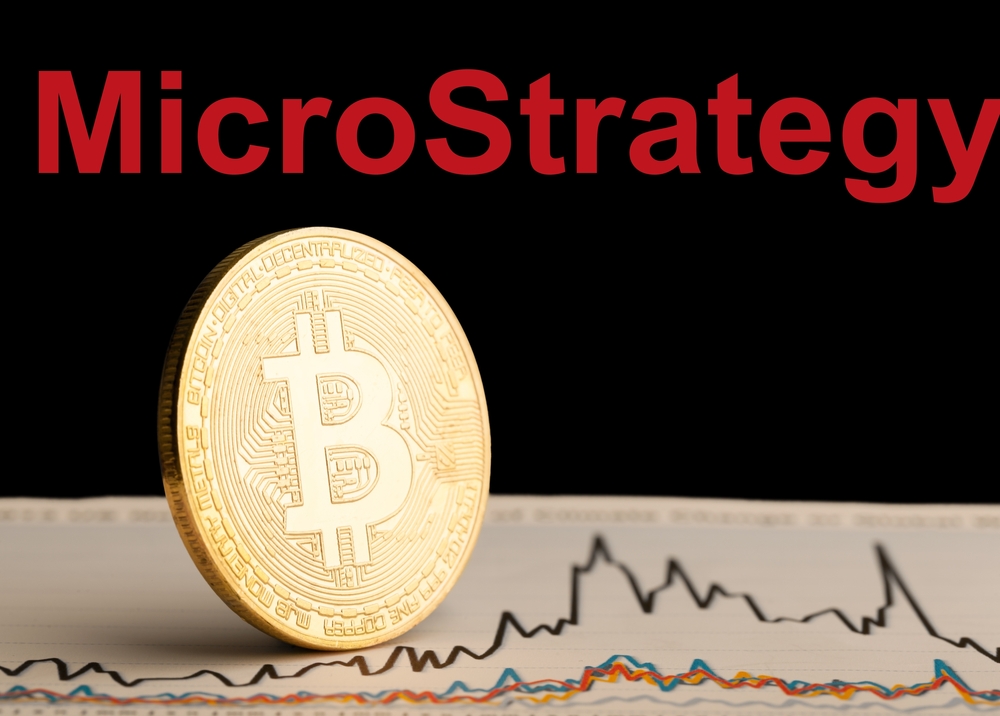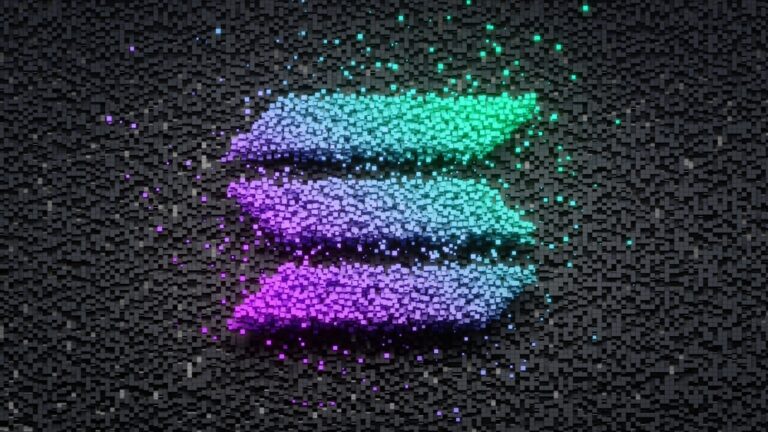Arweave is a decentralized data storage platform that aims to provide permanent, tamper-proof, and scalable on-chain storage solutions. The platform utilizes a unique blockchain-like structure called the blockweave, which enables it to offer cost-efficient and highly accessible storage. Arweave’s focus is on creating an economically viable system for information permanence through its native cryptocurrency, the AR token, to incentivize users and secure the network.
The Arweave protocol is designed to ensure that stored data remains available and cannot be deleted or altered. A key component of this technology is the proof of access consensus mechanism, which requires miners to prove they have accessed and stored a randomly selected, previously submitted piece of data. This ensures the long-term storage and preservation of the data on the network. Furthermore, the platform offers developers the opportunity to build and host decentralized applications, leveraging Arweave as the data storage infrastructure.
Table of Contents
ToggleKey Takeaways
- Arweave aims to provide permanent, tamper-proof, and scalable on-chain storage solutions through a unique structure called the blockweave.
- The platform relies on proof of access consensus mechanism to ensure long-term data storage and preservation.
- Arweave’s decentralized storage infrastructure offers developers the opportunity to build and host decentralized applications, leveraging the platform for data storage.
Understanding Arweave
Arweave is a decentralized storage platform that aims to provide permanent storage of digital information. Its main goal is to offer an eternal storage solution accessible to everyone, ensuring that data stored on its network is secure and available indefinitely.
Arweave utilizes its unique Blockweave technology, which is an improvement upon traditional blockchain systems. Blockweave significantly enhances the efficiency of the storage and retrieval processes. Additionally, Arweave has implemented the Wildfire solution, which further improves the scalability and efficiency of the network. This technology allows nodes within the Arweave ecosystem to communicate effectively with each other.
One of the main features that separates Arweave from other decentralized storage platforms is its native cryptocurrency, the Arweave token. This digital currency enables users to pay for the permanent storage of their data on the platform. Moreover, the Arweave token incentivizes miners to participate in the network, maintaining and securing the stored data.
In terms of partnerships, Arweave has collaborated with popular blockchain protocol Solana. This partnership has expanded Arweave’s user base and opened more opportunities for other blockchain protocols to join forces with the platform.
Here are some key points about Arweave:
- Decentralized storage platform
- Utilizes Blockweave technology for efficient data storage
- Offers the Wildfire solution for improved scalability
- Has its native cryptocurrency, Arweave token (AR)
- Partnered with Solana to expand its user base and forge new partnerships
By understanding Arweave’s unique features and the benefits it provides, one can appreciate the innovative solution it offers in the decentralized storage space. Its technology, partnerships, and token usage contribute to the platform’s capacity to provide permanent, secure, and accessible data storage for users all around the world.
Overview of Arweave Protocol
Arweave is a decentralized storage protocol designed to facilitate the permanent storage of information on its network. It achieves this through the use of a unique blockchain-like data structure called the blockweave. This innovation, combined with economic mechanisms and a robust consensus algorithm, provides users with a means to store data on a truly persistent, secure, and publicly accessible platform.
The protocol offers a novel solution to a pressing problem in the digital age: information permanence. By providing an economically sustainable method for data storage, it ensures that the content stored within the network remains accessible indefinitely. Arweave achieves this through a mechanism called Proof of Access. It enables the Arweave network to prioritize data retrieval and storage in a decentralized manner, rewarding users in the process.
Arweave’s network, which is composed of nodes that maintain and provide access to the stored data, is built on a peer-to-peer architecture. Utilizing a gossip protocol similar to Bitcoin, the network facilitates the distribution of data and ledger updates across its participants, ensuring a consistent and accurate view of the data stored.
A key component of Arweave’s ecosystem is the Permaweb, a decentralized and permanently-stored version of the World Wide Web. The Permaweb leverages Arweave’s protocol to allow developers to create and host web applications within the network. These applications are not only resistant to censorship and downtime but also exist indefinitely, ensuring their availability for future generations.
In summary, Arweave is a unique and innovative protocol designed to solve the problem of information permanence. Its core technology, the blockweave, facilitates the secure and permanent storage of data on a decentralized network. Through its economic incentives and architectural design, Arweave provides a scalable and sustainable way for users to store and access information on the platform, ushering in a new era of digital permanence.
The Arweave Technology: Blockweave and Proof of Access
Arweave’s unique technology is based on two main innovations: Blockweave and Proof of Access. These innovations allow the Arweave network to provide a decentralized, permanent, and scalable data storage solution.
Blockweave is the underlying data structure that stores information in the Arweave network. Unlike traditional blockchain technology, which is a linear sequence of blocks, the blockweave is a connected, weave-like structure that allows storing large amounts of data efficiently. The Arweave network algorithm utilizes this structure by connecting new blocks to multiple previous blocks, creating a more secure and accessible network.
Proof of Access (PoA) is the consensus mechanism used by the Arweave network to validate and confirm new data added to the blockweave. PoA is a novel approach to securing the network, as it requires miners to prove that they have previously accessed specific information from the blockweave. This ensures that the data remains accessible and provides an incentive for miners to maintain a copy of the blockweave. In addition, PoA helps to reduce the network’s energy consumption compared to traditional Proof of Work protocols. The Arweave lightpaper explains the PoA mechanism in detail.
In the Arweave ecosystem, miners play a crucial role in maintaining the network’s performance and security. They make use of the Proof of Access consensus protocol to validate transactions and add new data to the blockweave. In return for their contributions, miners are rewarded with the native cryptocurrency of the platform, AR tokens. These incentives encourage miners to keep the network running smoothly and securely.
Arweave is an innovative platform that aims to provide a sustainable, permanent, and decentralized data storage solution by leveraging the power of its unique technologies like blockweave and Proof of Access. By combining these innovations, Arweave has created a network that ensures the immutability and permanence of data while maintaining scalability and energy efficiency. Users can benefit from Arweave’s technology to store important documents, digital assets, and more with confidence in the long-lasting availability of their data.
Data Storage and Preservation in Arweave
Arweave is a decentralized data storage platform that aims to provide permanent data storage for users. By utilizing a unique blockchain-like data structure, Arweave ensures that the stored information remains accessible and intact forever. The platform’s focus is on sustainability, as it is designed to make on-chain data storage feasible and practical in the long term. (source 1)
One of the key features of Arweave is its ability to store vast amounts of data. It achieves this by leveraging a costless access system, allowing users to retrieve their data at no additional cost (source 2). This characteristic makes Arweave an appealing option for various applications, especially when the preservation of data integrity is a high priority. For instance, Arweave can be used to ensure legal documents remain uncorrupted and tamper-proof (source 3).
The system’s permanency aspect is further bolstered by the adoption of proof of work (PoW) and proof of stake (PoS) consensus mechanisms. These methods help maintain data consistency, as well as facilitate the ongoing processing of transactions and storage requests within the network. For example, the Canyon network, which operates on top of Arweave, uses PoS for storage consensus, whereas Arweave itself utilizes PoW (source 4).
In summary, Arweave is striving to create a web where all data is:
- Decentralized: No single entity controls the information.
- Permanent: Once stored, the data remains intact and accessible forever.
- Immutable: The saved data is resistant to tampering and corruption.
- Accessible: Users can retrieve their stored data without incurring additional costs.
By addressing these aspects, Arweave aims to contribute to a more robust and secure Web3.0 ecosystem, where data preservation and accessibility are no longer a challenge.
Building and Hosting on Arweave
Arweave is a decentralized storage protocol that aims to provide economically sustainable and permanent data storage. It offers developers an innovative platform to build and host decentralized web applications. By combining blockchain technology with a unique data structure called the blockweave, Arweave enables developers to create truly censorship-resistant and long-lasting applications.
To start building on Arweave, developers can leverage the user-friendly HTTP API. This API makes it extremely simple to create decentralized applications on top of the blockweave, as mentioned in the Arweave Yellow paper. This ease of use attracts developers looking to create applications with information permanence and censorship resistance in mind.
When building on Arweave, developers have the benefit of using familiar web development languages such as HTML, CSS, and JavaScript, enabling them to create a wide range of applications. The Arweave app hosting mechanism allows developers to build applications in a more familiar environment, as described in the Archain document.
Developers can also take advantage of Arweave’s cryptocurrency, the AR token. The AR token plays a crucial role in both the data storage and hosting aspects of the platform. As explained in this IEEE paper, the pricing of storage on Arweave depends on the marketplace and the AR cryptocurrency pricing. This model ensures the economic sustainability and viability of the decentralized storage system.
In summary, Arweave presents an advantageous platform for developers looking to build and host decentralized web applications. By providing a familiar development environment, a powerful HTTP API, and an economic model based on the AR token, Arweave offers developers the tools needed to create long-lasting, censorship-resistant applications.
AR Token and its Economics
The Arweave project utilizes a unique cryptocurrency called the AR Token. This native token plays an essential role in the economic mechanisms that support the Arweave protocol’s primary mission of providing cost-effective and sustainable information permanence. In contrast to conventional blockchains, the Arweave system hosts and stores data on-chain, making it a viable solution for long-term data storage and access.
A central aspect of the AR Token’s economics is its circulating supply. Arweave operates on the principle of endowing tokens to users to compensate for their contributions to the network, in addition to relying on token sales that allow users to buy AR and participate in the ecosystem. Due to this distribution model, the AR token’s circulating supply tends to change over time, influenced by user activity and participation.
To better understand the AR Token’s market position, one can review its market cap, which is the product of the token’s current price and circulating supply. This metric helps assess the total value of AR Tokens in the market and offers valuable information for investors and users alike. It is essential to note that market cap can fluctuate due to changes in price or circulating supply, thus reflecting the dynamic nature of the cryptocurrency domain.
The Arweave network is designed with flexibility in mind, with the AR Token functioning as the driving force behind its innovative economic mechanisms. It enables various use cases, such as offering artists licensing opportunities and supporting creative economy endeavors. Additionally, it is designed to actively encompass Arweave lightpaper‘s named Block-weave model, integrating with projects like VR/AR/XR museums and NFT platforms, further expanding potential applications and use-cases (refer to Arweave lightpaper or the VR/AR/XR museum tours for more details).
In summary, the AR Token is a critical component of the Arweave network’s economics, dictating important aspects like circulating supply and market cap. As a result, it supports the protocol’s goal of establishing a sustainable and efficient solution for long-term data management, and drives innovation in the broader cryptocurrency and blockchain space.
Arweave: A Decentralized Storage Infrastructure
Arweave is a decentralized storage infrastructure, aimed at providing economically sustainable information permanence. It leverages blockchain technology to create a distributed and resilient storage network, ensuring that data remains accessible and secure over time. This innovative approach offers several benefits for both users and developers, including data immutability, transparency, and redundancy.
The Arweave protocol relies on a unique consensus mechanism called Proof of Access (PoA), which allows participants to contribute their storage resources to the network and earn rewards in Arweave’s native cryptocurrency (AR) in return. By utilizing PoA, the network ensures data is stored across multiple nodes, thus making it highly resilient and virtually immune to data loss.
Additionally, Arweave has introduced Permaweb, a permanent and decentralized web platform built on top of the Arweave protocol. With the Permaweb, developers can create web applications that leverage the benefits of decentralized storage, such as censorship resistance and tamper-proof content, which can be particularly useful for sharing critical information or maintaining digital archives.
Some key features of the Arweave decentralized storage infrastructure include:
- Permanence: Arweave ensures that stored data remains accessible indefinitely, eliminating the need for periodic backups or data migration.
- Redundancy: Data is stored across multiple nodes in the network, which protects against data loss and ensures high availability.
- Security: The decentralized nature of the Arweave network enables it to withstand hacking attempts and censorship efforts.
- Immutability: All data stored on Arweave is immutable, providing an accurate, tamper-proof record.
Arweave is comparable to other decentralized storage cryptocurrencies like Filecoin, Storj, and Siacoin, each offering distinct features and advantages. Developers and users seeking decentralized storage solutions can explore these options to identify the most suitable platform for their requirements. By considering factors such as cost, performance, and scalability, one can determine the best solution for their specific use case.
Roles and Incentives in Arweave Network
The Arweave network is a decentralized storage platform designed to maintain a sustainable ecosystem through a balance of incentives and constraints. It benefits from the involvement of various participants, commonly known as nodes and users.
Nodes are responsible for maintaining the Arweave network’s infrastructure by storing data and ensuring its availability. They invest their computational power and storage resources into the network and are rewarded with Arweave tokens for their contribution. This reward system provides an incentive for nodes to dedicate more resources to the network, thus ensuring its stability and performance.
Users, on the other hand, are the ones who create and access data stored on the network. They pay a one-time transaction fee to store their data permanently within the Arweave network. The transaction fee is determined by the amount of data to be stored and the current market value of Arweave tokens. This fee structure encourages users to store high-value, relevant data, and avoids network congestion due to spamming or low-value data.
The incentives offered within the Arweave network aim to create a balance between resource usage and rewards. As the network scales and demand for storage grows, the incentive for nodes to maintain the network also increases, resulting in a positive feedback loop.
To summarize, the Arweave network relies on the alignment of users and nodes to maintain a sustainable, decentralized storage solution. Users pay transaction fees, which in turn serve as rewards for nodes, creating a balanced ecosystem that optimizes resource usage and fosters a reliable network for long-term data storage. These incentives work in tandem with the technical features of the Arweave protocol to create a next-generation peer-to-peer data network.
Arweave and the Broader Cryptocurrency Ecosystem
Arweave is a decentralized storage network that provides a permanent, secure, and economical solution for data storage. The protocol has a unique approach to information storage and offers an advantage in the context of the broader cryptocurrency ecosystem, making it a major player among other cryptocurrencies, such as Bitcoin and DeFi projects.
One of the key features of Arweave is its ability to offer economically sustainable information permanence. The protocol achieves this through a novel consensus algorithm called Proof of Access (PoA). PoA allocates rewards to miners based on the amount of data they store, which incentivizes them to store larger quantities of information, as detailed in Arweave’s yellow paper. This feature plays a crucial role in cryptocurrency ecosystems, as it allows for the blockchain’s history to be preserved indefinitely.
In terms of interoperability, Arweave has made significant contributions to the decentralized finance (DeFi) space. The network has formed an alliance with Solana, a high-performance blockchain platform. Through this partnership, Solana has integrated Arweave’s storage capacity, helping Arweave gain more prominence in the DeFi ecosystem. With the growing importance of data in the digital world, the collaboration between Arweave and DeFi platforms enhances their potential to offer innovative financial services.
Arweave’s decentralized storage network enriches the cryptocurrency ecosystem by addressing some challenges faced by traditional platforms such as Bitcoin:
- Scalability: Arweave’s PoA consensus mechanism ensures efficient data storage, making it more scalable than the Proof of Work (PoW) algorithm used in Bitcoin. Additionally, Arweave miners are encouraged to store larger amounts of data.
- Permanency: The economic sustainability of Arweave’s information storage guarantees that the blockchain’s history is preserved, whereas Bitcoin’s data is not guaranteed permanence.
In conclusion, Arweave contributes positively to the broader cryptocurrency ecosystem by offering a reliable, scalable, and permanent storage solution. Its collaboration with DeFi platforms and unique PoA consensus algorithm reinforce its value as a key player among cryptocurrencies. By addressing the challenges faced by established cryptocurrencies like Bitcoin, Arweave holds a strong position in the future development of decentralized technologies.
The Future of Arweave: Opportunities and Challenges
Arweave has a promising future, with several opportunities and challenges to consider. A key opportunity lies in their solid funding foundation, which was bolstered by a recent funding round. This financial backing offers the company stability and resources to further develop their innovative technologies.
One such technology is SmartWeave, a crucial element for Arweave’s future success. SmartWeave allows the creation of smart contracts on the Arweave network, enabling developers to build decentralized applications. This offers a unique value proposition by combining the permanent storage capabilities of Arweave with the functionality of smart contracts.
However, Arweave faces several challenges, including scalability and adoption. As the blockweave expands, maintaining efficient and sustainable storage becomes crucial. Arweave addressed these scalability concerns through their hard fork in version 2.0, improving the platform’s performance. Continued innovation will be necessary to overcome future scaling obstacles.
Another challenge involves adoption rates among users and developers. Arweave’s value lies in the widespread acceptance and usage of their decentralized storage platform. To achieve this, the project must continue promoting awareness, highlighting its potential in various sectors such as digital archiving, as demonstrated by the Rohingya Archive pilot implementation.
In summary, Arweave has a bright future, with substantial funding and promising technologies like SmartWeave. However, the project must continually tackle challenges such as scalability and user adoption, ensuring the platform remains competitive and innovative in the rapidly-evolving world of decentralized storage.
Frequently Asked Questions
What are the tokenomics of Arweave?
Arweave uses its native cryptocurrency, AR, to power its decentralized storage network. Token holders can participate in the network by providing storage and bandwidth resources, thus earning rewards for their services. The tokenomics of Arweave are designed to incentivize users to contribute to the network and maintain its long-term sustainability.
How does Arweave’s storage system work?
Arweave’s storage system uses a novel consensus mechanism called Proof of Access (PoA) which combines elements of proof of work and proof of stake. PoA secures the network and ensures data is stored permanently and efficiently. Data is stored in blocks and distributed across all network nodes, ensuring high availability and redundancy. The Arweave + IPFS integration enhances the storage system’s functionality.
What notable partnerships does Arweave have?
Arweave has made partnerships with prominent blockchain platforms, such as Solana and Polygon. The integration with Polygon allows users to store data on Arweave through Bundlr, which strengthens both networks. Additionally, Solana’s decision to outsource data storage to Arweave has positively impacted the latter’s growth and adoption.
How can I explore Arweave’s network?
Users can explore Arweave’s network through its block explorer or by utilizing third-party tools and extensions that provide insights into the network’s activity and data. These tools can help users understand the network’s value, as well as identify trends and growth opportunities.
What is the purpose of Arweave?
Arweave’s primary purpose is to provide a decentralized and permanent storage solution that enables web3 applications, developers, and users to store and exchange data securely and efficiently. By leveraging its unique consensus mechanism and network infrastructure, Arweave aims to provide a sustainable, powerful, and scalable storage platform.
Is it free to use the Arweave platform?
Using the Arweave platform is not entirely free, as users must pay fees in AR tokens for storing and accessing data on the network. These fees ensure that network resources are fairly distributed and that the platform remains operational. Users can gauge the cost of accessing or storing data by checking the current network rate.

















